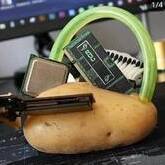Preserving data on drives when configuring FreeNas
-
Featured Topics
-
Topics
-
1
-
Captain LeFwee ·
Posted in Networking1 -
Krowzz7 ·
Posted in Servers, NAS, and Home Lab4 -
Juanni ·
Posted in New Builds and Planning3 -
rcarlos243 ·
Posted in Storage Devices2 -
0
-
Zac_The_Dude ·
Posted in Phones and Tablets8 -
Nikey982 ·
Posted in Troubleshooting4 -
6
-
eece_ret ·
Posted in Peripherals2
-
-
play_circle_filled

Latest From Tech Quickie:
Ethernet Is Named After Something Really Dumb (and other tech stories)
















Create an account or sign in to comment
You need to be a member in order to leave a comment
Create an account
Sign up for a new account in our community. It's easy!
Register a new accountSign in
Already have an account? Sign in here.
Sign In Now